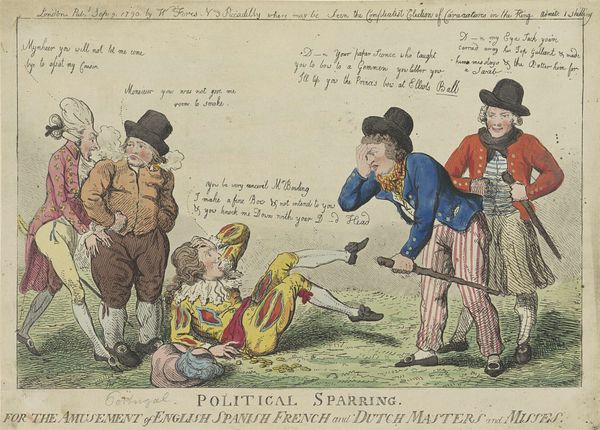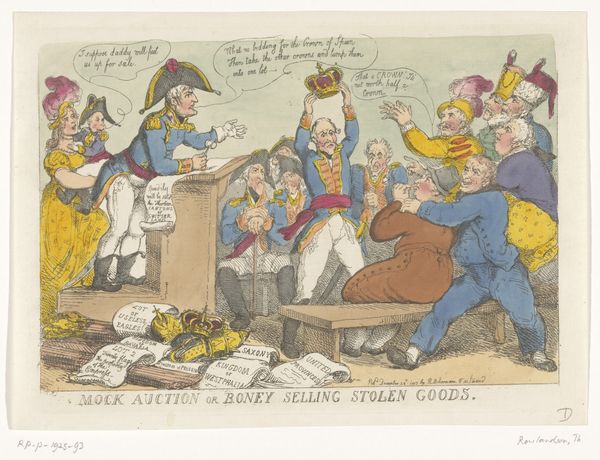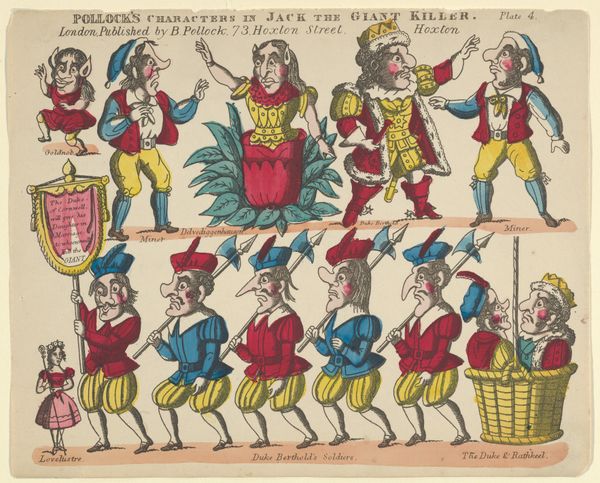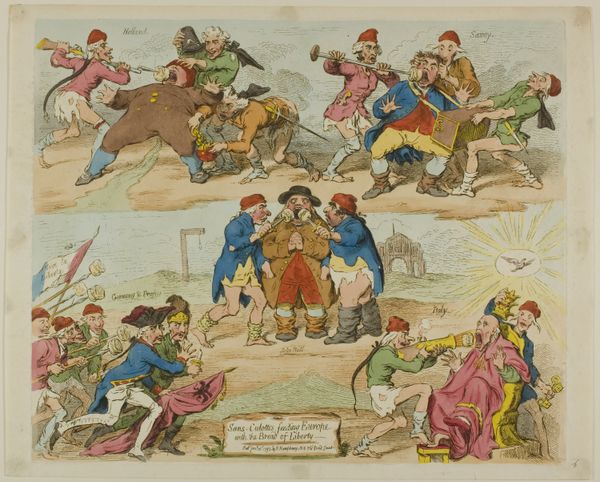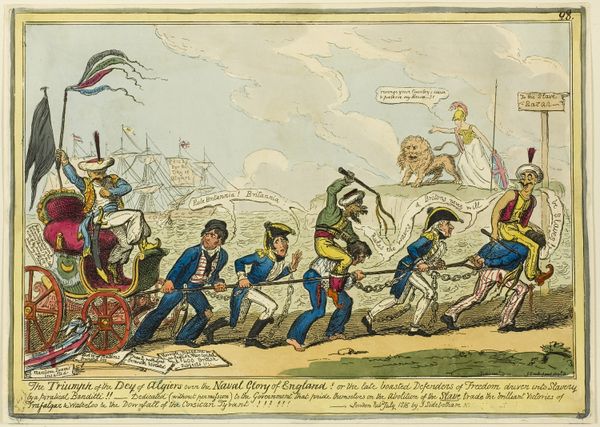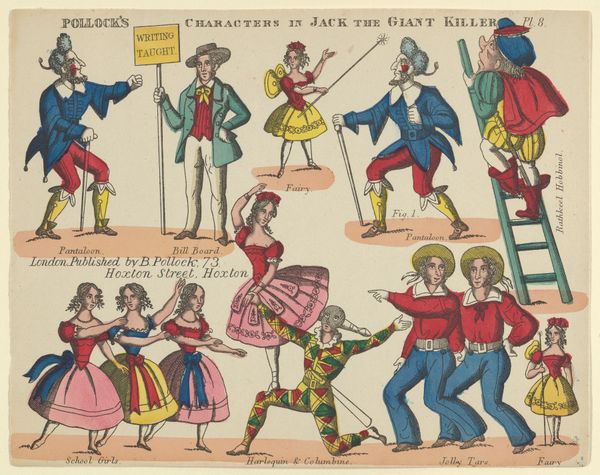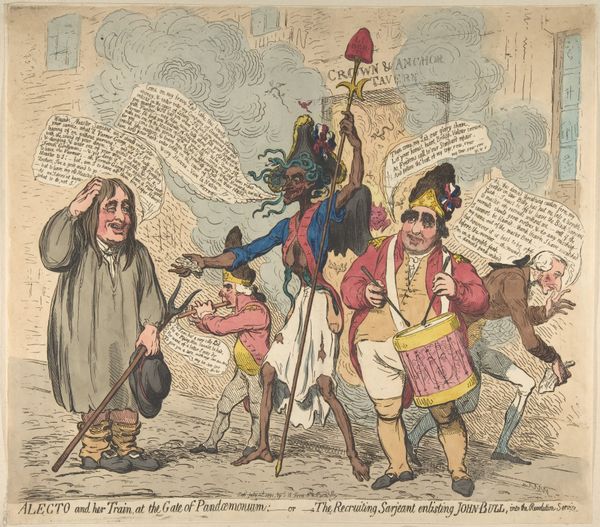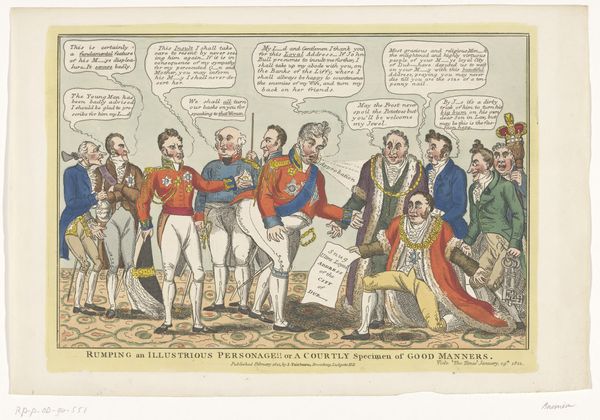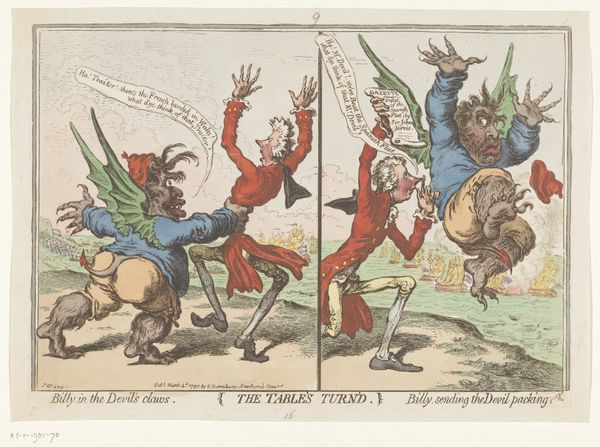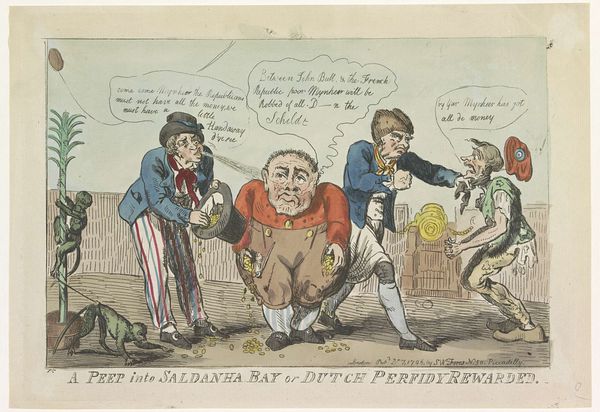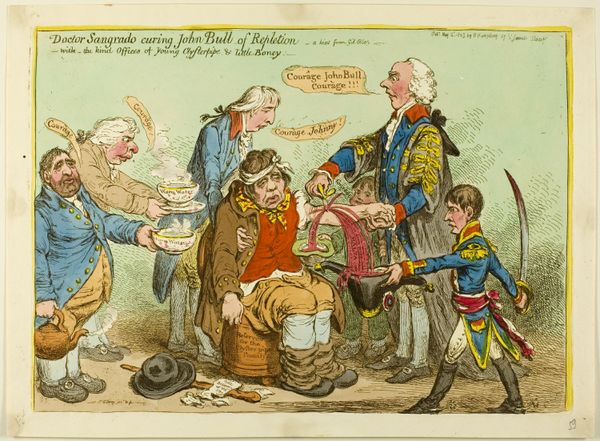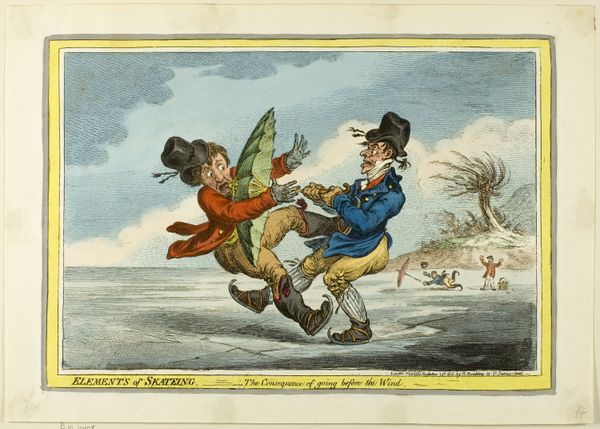
Characters, from Jack and the Giant Killer, Plate 3 for a Toy Theater 1870 - 1890
0:00
0:00
drawing, print
#
drawing
#
narrative-art
# print
#
caricature
#
fantasy-art
#
cartoon sketch
#
figuration
#
folk-art
Dimensions: Sheet: 6 11/16 × 8 7/16 in. (17 × 21.4 cm)
Copyright: Public Domain
Curator: Here we have “Characters, from Jack and the Giant Killer, Plate 3 for a Toy Theater,” dating to sometime between 1870 and 1890. The artist is Benjamin Pollock, and it’s a print now housed at the Metropolitan Museum of Art. My first impression is of visual chaos, really. The composition seems almost randomly assembled. Editor: It’s organized in its own way. This "chaos," as you call it, actually resonates deeply with the theatrical tradition. The toy theater, the very reason this print exists, served as a condensed spectacle—all the characters, props, and narrative beats compressed onto a single, vibrant sheet. This isn’t chaos, it’s concentrated symbolic power. Curator: Power in what sense? The giant with the spiked club dominates; he literally carries the villagers bound by what appears to be string! I detect elements of ancient archetypes and fairy tales conflated here. He mirrors mythic characters but presented for a child’s entertainment. The narrative elements act more like props. Editor: Note the way the color creates separate zones. Pollock employs flat planes of color. The simple palette—red, blue, yellow—lends a naive charm and a stark contrast to the cartoonish sketch of the characters. Think of Russian constructivist theatrical design! There, simplified forms and striking colors aimed to disrupt traditional perception. Curator: Precisely. So the bright colors reinforce the simplicity, almost mocking a dark narrative thread that weaves in servitude and danger. We, the modern viewers, can see darker societal allegories through the figures here. Do you think the imagery’s lightness mitigates any discomfort for its original audience? Editor: I doubt discomfort was the point. These exaggerated expressions aren’t meant to be taken seriously; the caricature serves to diminish any genuine fear. The very construction invites active participation and interpretation from its youthful owner. They become directors, selecting characters, shaping scenes and enacting a symbolic drama. Curator: And they repeat stories… myths, archetypes about triumphing over the oppressor—something that clearly continues to resonate. Seeing such themes filtered through children's toys provides a useful perspective into how society relays these beliefs and fears over time. Editor: I appreciate how your insight opens up its narrative meaning! Analyzing it formally helps appreciate its construction for the stage, I think.
Comments
No comments
Be the first to comment and join the conversation on the ultimate creative platform.

